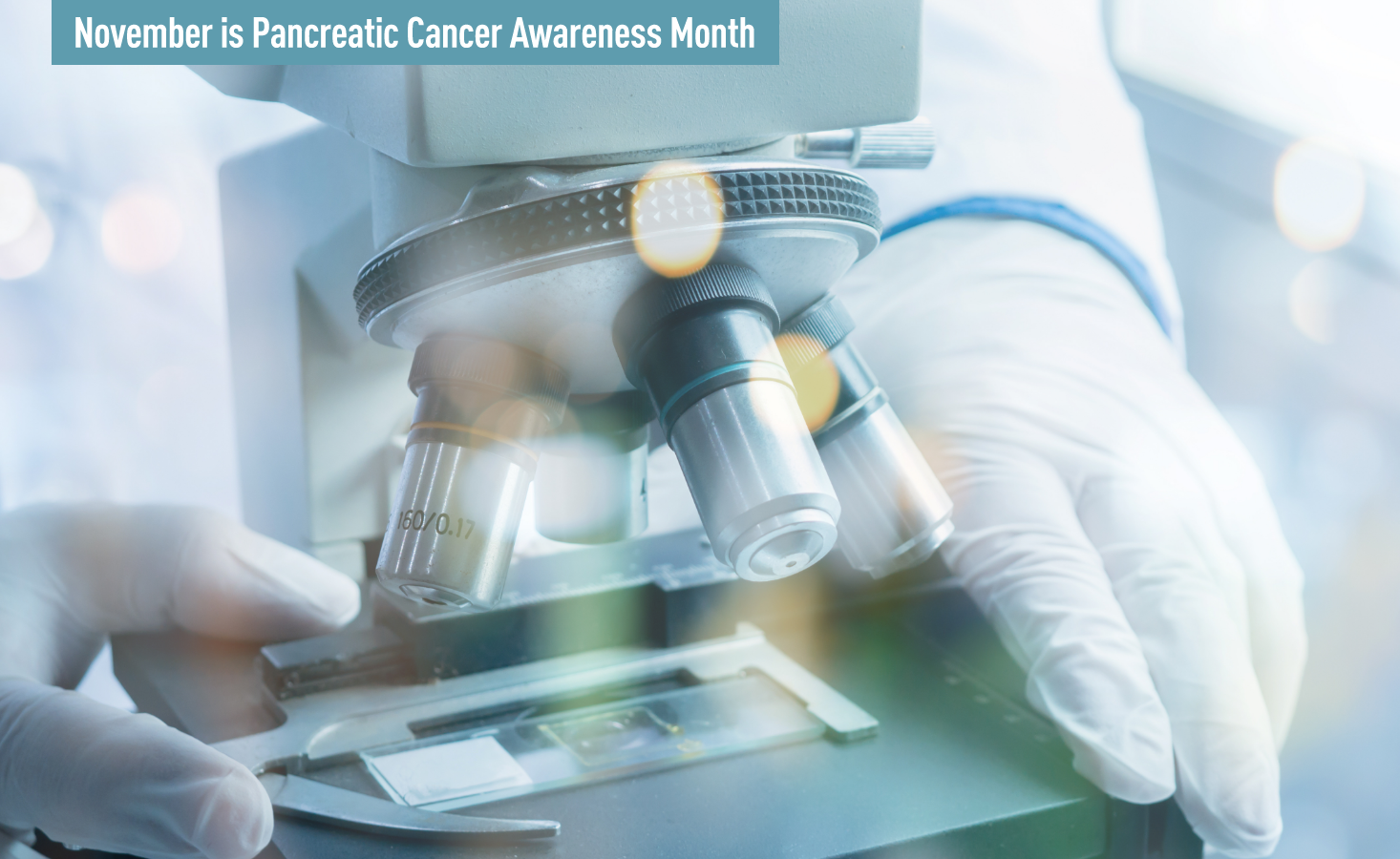
When it comes to long-term survival of pancreatic cancer, early detection is critical as it opens the door to the best option for a positive outcome – surgery. Undergoing surgery can increase a patient’s survival by almost ten-fold. But most people (80%) are diagnosed at later stages, after the disease has spread to other organs, making it more challenging to treat.
So how do we find pancreatic cancer earlier? For other types of cancer, standard screening tests like mammograms and colonoscopies have greatly increased survival. Unfortunately, there is still no standard test to find pancreatic cancer early in people at risk for the disease.
PanCAN – and researchers around the globe – are working hard to change that reality and progress is being made. Recent developments like blood tests, improved imaging techniques and artificial intelligence are generating excitement for their potential to detect pancreatic cancer early and save lives.
Read more about the newest science behind pancreatic cancer early detection, including what to know now and what may be coming in the not-too-distant future.
Blood Tests
What to Know Now: Commercial blood tests are one tool to help detect pancreatic cancer at an earlier stage. These tests detect certain markers or compounds in the blood that may suggest cancer is present. Several now on the market are multi-cancer tests, like the Galleri test from GRAIL and OneTest™, a multi-cancer test from 20/20 GeneSystems that looks for certain proteins that may signal the presence of cancer.
The Avantect Pancreatic Cancer Test from ClearNote Health focuses specifically on pancreatic cancer. It uses a blood sample to detect a biomarker called “circulating free DNA.” A negative test result means that this biomarker has not been detected. A positive test result means that this biomarker was detected, which could mean a person has pancreatic cancer, or other conditions such as pancreatitis or intraductal papillary neoplasms (IPMNs, a type of cyst of the pancreas).
It’s important to note that a blood test cannot say with certainty whether a person has pancreatic cancer. Follow-up testing such as imaging and a biopsy are necessary. Since many blood tests are expensive and not always covered by insurance, the first step is to have a conversation with your doctor about your risk factors and whether a blood test would be helpful.
What’s Next: Additional pancreatic cancer-specific and multi-cancer blood tests are being tested in clinical trials. Tests to detect pancreatic cancer using saliva and urine are also being developed, although these studies are in the early phases. It is doubtful that one marker alone will be able to reliably diagnose all types of pancreatic cancer. It is more likely that a group, or panel, of many markers will be combined to create an accurate test in the future. With continued research, improved technology and increased funding, researchers predict that significant advances in the early detection of pancreatic cancer will be made in the next few years.
Genetic Testing and Surveillance
What to Know Now: If you are a first-degree relative (parent, sibling, child) of someone diagnosed with pancreatic cancer, you may have an increased risk of developing the disease. If your family member received genetic testing for inherited mutations and none were found, this often means you do not need to get genetic testing. If the results were positive, unknown, or if you have several close family members with cancer, PanCAN recommends consulting with a genetic counselor to determine if genetic testing would be appropriate. If a genetic risk factor is uncovered, one option may be surveillance, where doctors monitor at-risk individuals with a goal to diagnose pre-cancerous lesions and pancreatic cancer early through regular imaging and other tests.
What’s Next: Not only are high-risk individuals in surveillance programs receiving leading-edge health care, they are also advancing science. Studies have shown that people at higher risk who participate in surveillance studies have better outcomes, since their cancer can be caught earlier. These studies provide a wealth of information about who is at risk, what genes are most involved in developing pancreatic cancer and the best methods for early diagnosis and treatment.
Imaging and Artificial Intelligence
What to Know Now: Several imaging tests can be used in combination to visualize a mass or tumor that may be present on the pancreas. Some of these tests include endoscopic ultrasound (EUS), computed tomography (CT), positron emission tomography (PET) scan, magnetic resonance imaging (MRI), and endoscopic retrograde cholangiopancreatography (ERCP).
Because pancreatic cancer is relatively rare, current guidelines recommend against routine screening in the general population. Part of the challenge, and something many researchers are focused on, is identifying groups at higher risk for pancreatic cancer so that they can receive regular imaging and monitoring. PanCAN’s Early Detection Initiative is important to efforts here. This ongoing research studies whether imaging at the time of new-onset diabetes leads to earlier detection of pancreatic cancer.
What’s Next: Researchers are studying how to use artificial intelligence (AI) and machine learning in tandem with current imaging techniques to improve how we detect pancreatic cancer. Since it can be difficult for radiologists to differentiate non-cancerous lesions or cysts from pancreatic cancer, the goal is to figure out how to use these new technologies along with imaging to better pinpoint pancreatic cancer at its earliest stages.
Applying AI to the vast amounts of data contained in electronic medical records also holds promise: One study recently published in Nature Medicine generated headlines for its exciting findings. The study used AI to evaluate the medical histories of nearly 28,000 people who were diagnosed with pancreatic cancer, compared to millions of healthy controls with similar characteristics. The investigators found patterns of previously unrecognized symptoms or other clues that may signify the presence of a disease like pancreatic cancer before it would otherwise be diagnosed, helping to differentiate those at risk to later be diagnosed with pancreatic cancer.
PanCAN is committed to changing outcomes and improving the lives of everyone impacted by pancreatic cancer, now and in the future. We’re excited to see this new wave of research bringing progress and hope for a world where all patients with pancreatic cancer will thrive.





